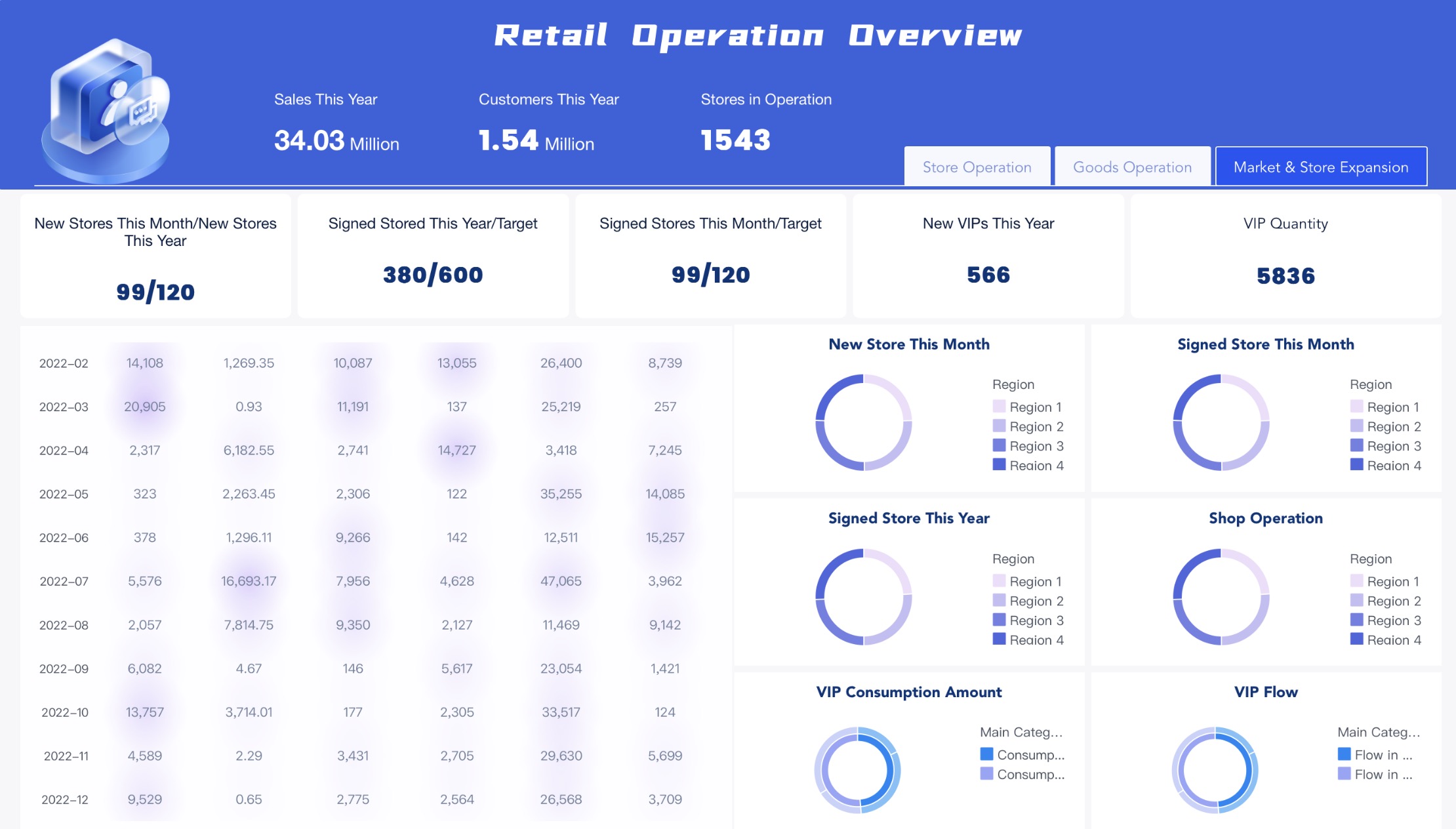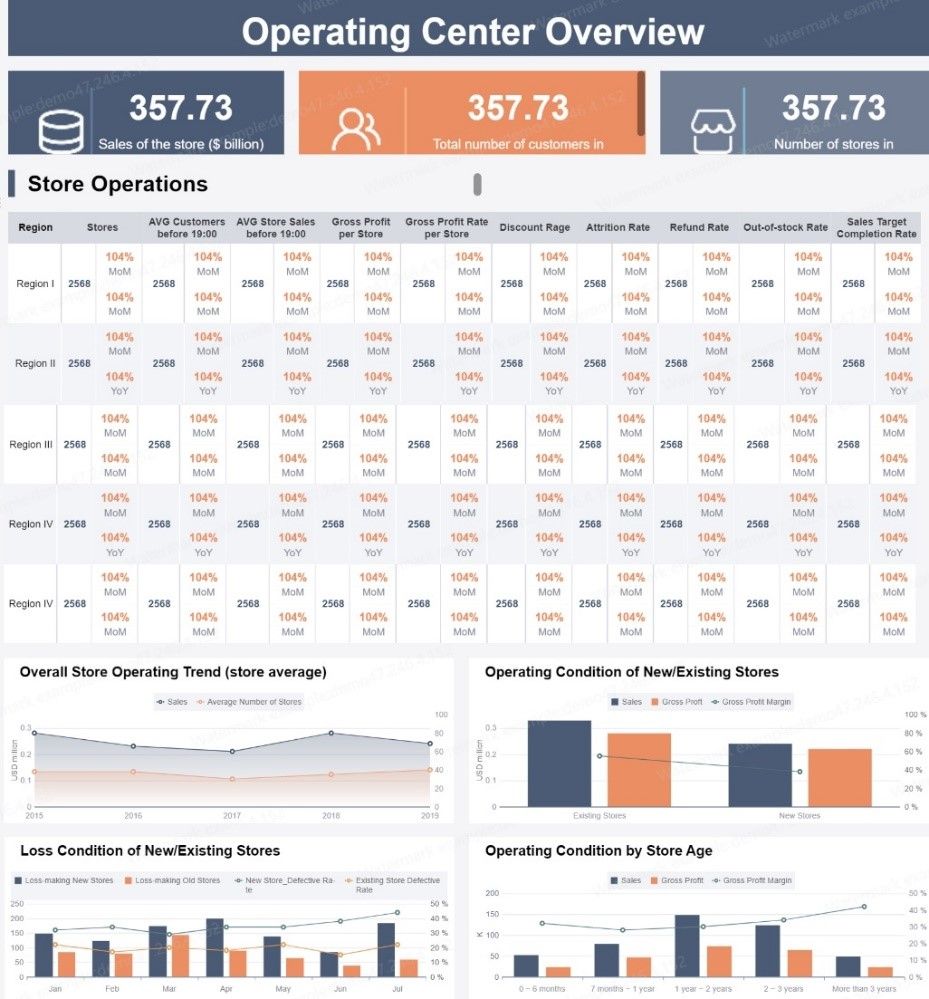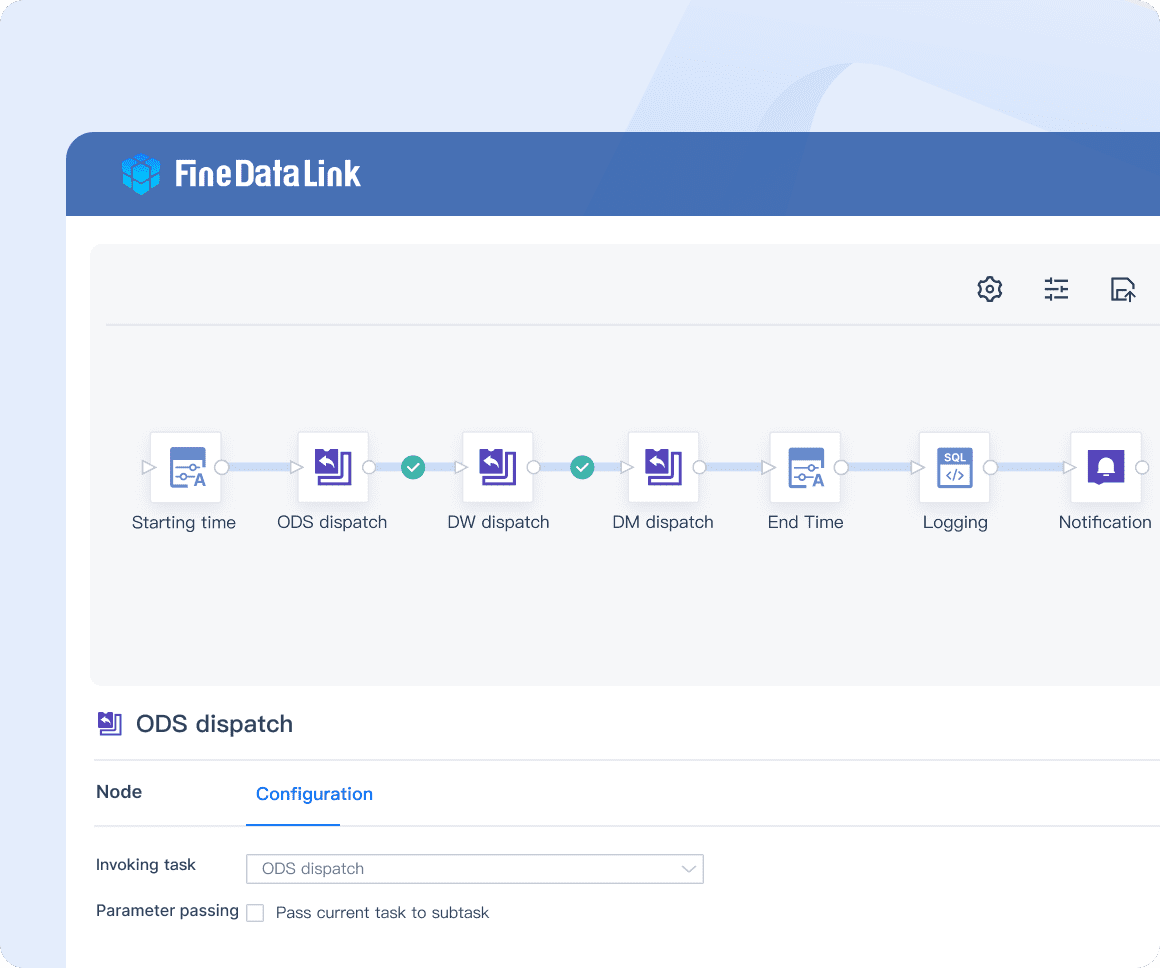

Data reduction plays a crucial role in managing the vast amounts of information generated daily. It involves condensing storage space and enhancing efficiency by summarizing and simplifying data while preserving its essential characteristics. In today's data-driven world, you encounter data reduction in various fields, from industry to bioinformatics. This process not only improves storage systems but also boosts data processing capabilities. Tools like FineDataLink and FineBI help businesses streamline data integration and analysis, making data reduction an indispensable part of modern data management.

Understanding Data Reduction
Definition and Explanation of Data Reduction
Data reduction is a powerful technique that helps you manage large datasets by minimizing their size while retaining essential information. This process is crucial in today's data-driven world, where the volume of data generated is immense. By reducing data, you can optimize storage capacity, enhance processing capabilities, and improve analysis efficiency. Data reduction techniques allow you to focus on key points, making it easier to interpret and analyze data.
Key Concepts in Data Reduction
Several key concepts underpin data reduction. First, it involves summarizing data to highlight the most important aspects. This can include paraphrasing lengthy narratives to focus on main ideas. Second, data reduction aims to reduce complexity, making it easier for you to work with large datasets. By doing so, you can increase accuracy and produce more useful results. Lastly, data reduction can significantly lower storage costs and improve storage performance, which is vital for businesses and researchers alike.
Historical Context and Evolution
The concept of data reduction has evolved significantly over time. In the past, data was primarily stored in physical formats, which limited the amount of information that could be retained. As technology advanced, digital storage became more prevalent, allowing for larger datasets to be stored and analyzed. The rapid development of science and technology in the information age has led to an explosion of data across various fields. This growth has necessitated the development of advanced data reduction techniques to manage and utilize these massive datasets effectively.
Types of Data Reduction
Data reduction can be categorized into two main types: lossless and lossy.
Lossless Data Reduction
Lossless data reduction techniques allow you to compress data without losing any information. This means that you can reconstruct the original data exactly from the reduced version. Common methods include data compression algorithms like Huffman coding and Run-Length Encoding. These techniques are particularly useful when you need to preserve the integrity of the data, such as in scientific research or legal documentation.
Lossy Data Reduction
In contrast, lossy data reduction involves compressing data by removing some information. While this may result in a loss of detail, it can significantly reduce the size of the dataset. Lossy techniques are often used in applications where perfect accuracy is not required, such as in audio and video compression. By using lossy data reduction, you can achieve higher compression rates, making it ideal for scenarios where storage space is limited.
Both FineDataLink and FineBI offer tools and solutions that facilitate data reduction, helping businesses and researchers manage their data more efficiently. FineDataLink provides real-time data synchronization and advanced ETL/ELT capabilities, while FineBI empowers users with self-service analytics and data visualization features. These tools are essential for modern data management, enabling you to harness the power of data reduction effectively.
Techniques for Data Reduction
Data reduction techniques help you manage large datasets by minimizing their size while retaining essential information. These techniques enhance storage efficiency, improve processing capabilities, and simplify data analysis. Let's explore some key methods.
Data Compression
Data compression reduces the size of data files, making them easier to store and transmit. You can use various algorithms to achieve this.
Common Algorithms
- Huffman Coding: This algorithm assigns shorter codes to frequently occurring data elements, reducing overall file size.
- Run-Length Encoding (RLE): RLE compresses data by replacing sequences of repeated elements with a single value and count.
- Lempel-Ziv-Welch (LZW): LZW replaces repeated patterns with shorter codes, making it effective for text and image compression.
Use Cases
Data compression finds applications in many areas. You can use it to reduce the size of text files, images, and videos. This technique is crucial for efficient data transmission over networks and for saving storage space on devices. FineDataLink employs data compression to optimize data integration processes, ensuring seamless data flow across systems.
Dimensionality Reduction
Dimensionality reduction simplifies datasets by reducing the number of variables while preserving essential patterns. This technique enhances data analysis and visualization.
Principal Component Analysis (PCA)
PCA transforms data into a set of orthogonal components, capturing the most variance. You can use PCA to reduce the dimensionality of datasets, making them easier to analyze. This method is widely used in machine learning to improve model performance by focusing on key features.
Singular Value Decomposition (SVD)
SVD decomposes a matrix into three simpler matrices, revealing underlying patterns. You can apply SVD to compress data and enhance its interpretability. This technique is valuable in image processing and recommendation systems, where it helps identify latent factors.
Data Aggregation
Data aggregation involves summarizing data to provide a concise overview. This method reduces data complexity and enhances analysis efficiency.
Methods and Tools
- Summarization: You can summarize data by calculating averages, totals, or other statistical measures.
- Grouping: Grouping data based on specific criteria allows you to analyze subsets more effectively.
- FineBI: FineBI offers tools for data aggregation, enabling you to create insightful visualizations and reports.
Benefits and Limitations
Data aggregation simplifies complex datasets, making them easier to interpret. It enhances decision-making by providing a clear overview of trends and patterns. However, aggregation may lead to information loss, as detailed data points are combined into summaries. You must balance the need for simplicity with the preservation of essential details.
Benefits of Data Reduction
Data reduction offers numerous advantages that can significantly enhance your data management and analysis processes. By focusing on key aspects, you can streamline operations and gain valuable insights.
Improved Data Processing
Speed and Efficiency
Data reduction plays a pivotal role in boosting the speed and efficiency of data processing. When you reduce the volume of data, you decrease the computational load on your systems. This leads to faster data retrieval and processing times. For instance, by employing data reduction techniques, you can optimize storage space and improve data processing speed. This enhancement allows you to handle larger datasets with ease, ensuring that your operations run smoothly and efficiently.
Cost Reduction
Reducing data volume also translates into cost savings. By minimizing the amount of data stored, you lower the expenses associated with data storage and management. Data reduction greatly increases the efficiency of a storage system, impacting the total spend on capacity. This cost-effectiveness is crucial for businesses looking to optimize their resources and allocate budgets more strategically.
Enhanced Data Analysis
Simplified Models
Data reduction simplifies complex datasets, making it easier for you to build and interpret analytical models. By focusing on the most relevant data points, you can create models that are not only simpler but also more accurate. This simplification helps in identifying patterns and trends without the noise of extraneous data. As a result, you can develop models that provide clearer insights and drive better decision-making.
Better Insights
With data reduction, you gain enhanced analytical insights. By concentrating on essential information, you can uncover deeper insights into your data. This focus allows you to make informed decisions based on accurate and relevant data. Tools like FineDataLink and FineBI facilitate this process by providing advanced data integration and visualization capabilities. These tools empower you to harness the full potential of data reduction, leading to improved business outcomes and strategic growth.
Challenges in Data Reduction
Data reduction offers numerous benefits, but it also presents challenges that you must navigate carefully. Understanding these challenges helps you make informed decisions and optimize your data management strategies.
Data Loss Concerns
One of the primary challenges in data reduction is the potential loss of information. When you reduce data, you risk losing essential details that could impact the accuracy and usefulness of your analysis. Balancing the need for space savings with the preservation of data fidelity is crucial.
Balancing Reduction and Accuracy
To maintain the richness and depth of your data, you must find a balance between reducing data size and retaining critical information. This involves carefully selecting which data points to keep and which to discard. You should focus on preserving the most relevant and impactful data elements. By doing so, you can ensure that your analysis remains accurate and meaningful.
Mitigation Strategies
To mitigate data loss, you can employ several strategies. First, prioritize data elements based on their importance to your analysis. Second, use advanced data reduction techniques that minimize information loss, such as lossless compression methods. Finally, regularly review and update your data reduction processes to adapt to changing needs and technologies. These strategies help you maintain data integrity while benefiting from reduced data volumes.
Technical Limitations
Data reduction also faces technical limitations that can affect its implementation and effectiveness. Understanding these limitations allows you to address them proactively.
Computational Complexity
Data reduction techniques often involve complex algorithms that require significant computational resources. This complexity can slow down processing times and increase the demand on your systems. To overcome this challenge, you should invest in efficient algorithms and powerful computing infrastructure. By optimizing your computational resources, you can enhance the speed and efficiency of your data reduction processes.
Resource Constraints
Resource constraints, such as limited storage capacity and processing power, can hinder your ability to implement data reduction effectively. To address these constraints, you should prioritize resource allocation and invest in scalable solutions. Tools like FineDataLink and FineBI offer advanced data integration and analysis capabilities that help you manage resources more efficiently. By leveraging these tools, you can overcome resource limitations and maximize the benefits of data reduction.
Applications of Data Reduction
Data reduction plays a vital role in various fields, enhancing efficiency and effectiveness. Let's explore its applications in business intelligence and scientific research.
In Business Intelligence with FanRuan's FineBI
In the realm of business intelligence, data reduction helps streamline operations and improve decision-making. FanRuan's FineBI stands out as a powerful tool in this domain.

Case Studies
Case Study 1: Retail Analytics A leading retail chain implemented FineBI to optimize its data analysis processes. By employing data reduction techniques, the company condensed vast amounts of sales data into actionable insights. This approach enabled the retailer to identify purchasing trends and adjust inventory levels accordingly. As a result, the company experienced a significant increase in sales and customer satisfaction.

Case Study 2: Financial Services A financial institution utilized FineBI to enhance its risk assessment models. By reducing the complexity of financial datasets, the institution improved the accuracy of its predictions. This led to better risk management and more informed investment decisions. The use of data reduction in this context not only saved time but also increased the institution's profitability.

Retail Dashboard by FineBI
Tools and Technologies
FineBI offers a suite of tools that facilitate data reduction in business intelligence. These tools include:
- Data Aggregation: FineBI allows you to summarize and group data, providing a clear overview of key metrics.
- Dimensionality Reduction: Techniques like Principal Component Analysis (PCA) help simplify complex datasets, making them easier to analyze.
- Visualization: FineBI's visualization capabilities enable you to present data in an easily interpretable format, highlighting essential insights.
In Scientific Research
Data reduction is equally important in scientific research, where it aids in managing large datasets and extracting meaningful information.
Examples from Various Fields
Genomics In genomics, researchers deal with massive datasets generated from DNA sequencing. Data reduction techniques help condense this information, allowing scientists to focus on significant genetic variations. This approach accelerates the discovery of disease-related genes and the development of targeted therapies.
Astronomy Astronomers use data reduction to process the vast amounts of data collected from telescopes. By filtering out noise and irrelevant information, researchers can concentrate on identifying celestial objects and phenomena. This enhances the accuracy of astronomical observations and contributes to our understanding of the universe.
Impact on Research Outcomes
Data reduction significantly impacts research outcomes by improving computational efficiency and storage capacity. It enables researchers to handle large datasets without compromising on accuracy. By emphasizing relevant information, data reduction enhances the quality of data mining projects, leading to more accurate and useful results. This approach is crucial for advancing scientific knowledge and driving innovation.
Role of FanRuan in Data Reduction
FanRuan plays a pivotal role in the realm of data reduction, offering innovative solutions that enhance data management and analysis. By leveraging tools like FineDataLink and FineBI, you can streamline your data processes, ensuring efficiency and accuracy.
FineDataLink's Contribution
FineDataLink stands out as a robust platform for data integration, providing essential features that facilitate data reduction.

Real-Time Data Synchronization
With FineDataLink, you achieve real-time data synchronization across multiple systems. This capability ensures that your data remains up-to-date and consistent, reducing the need for redundant storage. By synchronizing data in real-time, you minimize latency and enhance the speed of data processing. This feature is crucial for businesses that require immediate access to accurate data for decision-making.

ETL/ELT Capabilities
The platform also excels in ETL (Extract, Transform, Load) and ELT (Extract, Load, Transform) processes. These capabilities allow you to preprocess and transform data efficiently, reducing its volume while retaining essential information. By optimizing these processes, FineDataLink helps you manage large datasets with ease, improving computational efficiency and reducing storage costs.
FineBI's Impact on Data Analysis
FineBI empowers you with advanced analytics and visualization tools, making data reduction more effective and insightful.
Self-Service BI Features
FineBI offers self-service business intelligence features that enable you to perform data analysis independently. You can connect to various data sources, analyze datasets, and generate reports without relying on IT support. This autonomy enhances your ability to make informed decisions quickly, as you can focus on the most relevant data points.
Enhanced Data Visualization
The platform's enhanced data visualization capabilities allow you to present complex data in an easily interpretable format. By using visual tools, you can highlight key insights and trends, making it easier to understand and communicate findings. This feature not only simplifies data analysis but also enhances the quality of your insights, leading to better strategic decisions.
Future Trends in Data Reduction
As technology advances, data reduction continues to evolve, adapting to new challenges and opportunities. Understanding these trends helps you stay ahead in managing and analyzing data effectively.
Emerging Technologies
AI and Machine Learning
Artificial Intelligence (AI) and Machine Learning (ML) are revolutionizing data reduction. These technologies automate the extraction of insights from large datasets, identifying patterns and making predictions with remarkable accuracy. By integrating AI and ML, you can simplify machine learning models, reduce modeling costs, and decrease processing and training time. This synergy enhances data processing and analytics capabilities, making it easier to handle vast amounts of information efficiently.
Big Data Analytics
Big Data Analytics plays a crucial role in data reduction by optimizing storage performance and reducing costs. Techniques like feature selection, feature extraction, and data compression enhance storage efficiency and computational speed. By decreasing dataset complexity and size without altering its traits, you can improve model performance in machine learning and data analysis. This approach ensures that you can manage large datasets effectively, extracting valuable insights while minimizing resource usage.
Evolving Needs and Solutions
Industry-Specific Innovations
Different industries face unique challenges in data management, leading to the development of industry-specific innovations. For example, in the dairy supply chain, big data-driven solutions address barriers to achieving circularity. By leveraging data reduction techniques, you can optimize processes and enhance efficiency across various sectors. These innovations ensure that you can meet evolving needs while maintaining high performance and accuracy in data analysis.
Global Implications
The global implications of data reduction are profound, impacting how businesses and researchers manage and utilize data. As data volumes continue to grow, the need for efficient data management becomes increasingly critical. By adopting advanced data reduction techniques, you can enhance storage performance, reduce costs, and improve decision-making processes. This global shift towards more efficient data management practices ensures that you can stay competitive in an ever-changing landscape.
Additional Resources and FAQs of Data Reduction
To deepen your understanding of data reduction, explore these recommended resources and frequently asked questions. These materials will provide you with valuable insights and practical knowledge.
Recommended Reading
Books and Articles
- "Data Mining: Concepts and Techniques" by Jiawei Han, Micheline Kamber, and Jian Pei
This book offers a comprehensive overview of data mining techniques, including data reduction methods. It explains how these techniques can simplify complex datasets and improve analysis efficiency. - "The Elements of Statistical Learning" by Trevor Hastie, Robert Tibshirani, and Jerome Friedman
This text delves into statistical learning methods, emphasizing the importance of data reduction in model building and prediction accuracy. - "Data Reduction and Error Analysis for the Physical Sciences" by Philip R. Bevington and D. Keith Robinson
This book focuses on data reduction techniques in scientific research, providing practical examples and methodologies. - **Articles from Wall Street Mojo and Weka.io
These articles discuss various data reduction techniques and their significance in data analysis. They highlight methods like deduplication, compression, and encoding, which optimize storage capacity and enhance productivity.
Online Courses
- Coursera: "Data Science Specialization"
This course covers essential data science concepts, including data reduction techniques. It provides hands-on experience with real-world datasets. - edX: "Data Analysis for Life Sciences"
This course focuses on data analysis in the life sciences, emphasizing the role of data reduction in managing large biological datasets. - Udacity: "Intro to Data Science"
This introductory course explores data science fundamentals, including data reduction methods that streamline data processing and analysis.
Frequently Asked Questions
Common Misconceptions
- Is data reduction the same as data deletion?
No, data reduction is not about deleting data. Instead, it involves condensing data to retain essential information while minimizing storage requirements. - Does data reduction always lead to data loss?
Not necessarily. While some techniques, like lossy compression, may result in data loss, others, such as lossless compression, preserve all original data. - Is data reduction only useful for large datasets?
Data reduction benefits both large and small datasets by improving processing speed, storage efficiency, and analysis clarity.
Expert Answers
- How does data reduction improve data analysis?
By reducing data complexity, data reduction allows you to focus on key insights and patterns. This simplification enhances model accuracy and decision-making. - What role do FineDataLink and FineBI play in data reduction?
FineDataLink facilitates real-time data synchronization and efficient ETL/ELT processes, optimizing data management. FineBI empowers users with self-service analytics and visualization tools, making data reduction more accessible and effective. - Can data reduction techniques be automated?
Yes, many data reduction techniques can be automated using software tools and algorithms, streamlining the process and ensuring consistency.
By exploring these resources and addressing common questions, you can enhance your understanding of data reduction and its applications. This knowledge will empower you to manage and analyze data more effectively, leading to better insights and outcomes.
Data reduction remains a cornerstone in managing today's vast data landscapes. By simplifying datasets, you enhance storage efficiency and boost computational performance. As technology evolves, the future of data reduction promises even more innovative solutions. You can expect advancements that further optimize storage and processing capabilities. To stay ahead, explore resources like FineDataLink and FineBI, which offer powerful tools for data integration and analysis. These platforms empower you to harness data reduction effectively, ensuring you make informed decisions with precision and clarity.
FAQ
Data reduction involves minimizing the size of datasets while retaining essential information. This technique optimizes storage capacity, enhances computational efficiency, and improves analytical insights. By compressing data, you reduce the need for additional storage, which lowers costs and boosts performance.
When you reduce data volume, you decrease the computational load on your systems. This leads to faster processing times and more efficient data retrieval. For example, FineDataLink employs data reduction techniques to streamline data integration processes, ensuring seamless data flow across systems.
Several techniques help achieve data reduction. You can use methods like summarization, where lengthy narratives are paraphrased to focus on key points. Another approach involves creating short summaries of long transcripts to capture the essence of discussions. These strategies aim to reduce data volume without compromising content integrity.
Not necessarily. While some techniques, such as lossy compression, may result in data loss, others, like lossless compression, preserve all original data. It's crucial to choose the right method based on your specific needs and the importance of data accuracy.
FineBI empowers users with self-service analytics and visualization tools, making data reduction more accessible and effective. It allows you to connect to various data sources, analyze datasets, and generate reports independently. FineDataLink, on the other hand, excels in real-time data synchronization and efficient ETL/ELT processes, optimizing data management and reducing redundancy.
Continue Reading About Data Reduction
2025 Best Data Integration Solutions and Selection Guide
Explore top data integration solutions for 2025, enhancing data management and operational efficiency with leading platforms like Fivetran and Talend.
Howard
Dec 19, 2024
2025's Best Data Validation Tools: Top 7 Picks
Explore the top 7 data validation tools of 2025, featuring key features, benefits, user experiences, and pricing to ensure accurate and reliable data.
Howard
Aug 09, 2024
Best Data Management Tools of 2025
Explore the best data management tools of 2025, including FineDataLink, Talend, and Snowflake. Learn about their features, pros, cons, and ideal use cases.
Howard
Aug 04, 2024
Best Data Integration Vendors for Seamless Workflows
Discover the top 20 data integration vendors of 2025 for seamless workflows. Compare tools like Talend, AWS Glue, and Fivetran to optimize your data processes.
Howard
Jan 22, 2025
Data Analysis vs Data Analytics: What’s the Real Difference?
Data Analysis vs Data Analytics: What’s the Difference? Discover How One Interprets History While the Other Shapes Tomorrow. Explore Here!
Lewis
Mar 10, 2025
Customer Data Integration: A Comprehensive Guide
Master customer data integration to enhance business operations by combining data from multiple sources for a comprehensive customer view.
Howard
Sep 07, 2024




